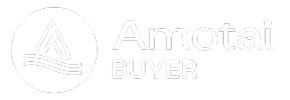



Curved Roofing
Curved roofing system design
Combinations of curves and straight sections must be laid out on the roof to fit purlin locations where fastening and sheet end laps occur. Basic rules that govern the design are:
- Straight tails on curves must span across at least two purlins.
- Maximum length from curve to tail end is normally limited by transport and handling to 6m.
- Laps must be in areas of roof pitch that meet the minimum pitch requirement for the profile.
- A roof shape transition from convex to concave curves must have a straight section of at least 300mm located over a purlin to allow fixing.
*Note that 0.40mm LT7 and Styleline are not recommended for crimp curing to a radius greater than 900mm (refer Section 2.4.2.2.1 of the technical manual)
*Note that 0.40mm LT7 and Styleline are not recommended for crimp curing to a radius greater than 900mm (refer Section 2.4.2.2.1 of the technical manual)
Drape curved roofing system design
Recommended Curve Radius
Minimum Radius
The minimum curve radius for each profile is restricted by the appearance of the roof sheet. As the radius is reduced the “pan” of the profile will begin to exhibit compression ripples that will detract from a clean appearance, and eventually reach a level that is generally regarded as unacceptable.
The minimum radius given below for each profile, together with the purlin spacing recommended for use at the minimum radius, will ensure the clean appearance of the drape curved roof with minimal ripple effect.
Specific aesthetic requirements for drape curved roofing must be discussed with Dimond at the design stage.
Maximum Radius
The maximum curve radius for each profile is restricted by the need to have the selected profile roof-sheeting reach its minimum recommended pitch at the gutter line for the profile used.
This restriction ensures large radius “flat” roofs are not used.
In addition, the maximum radius limitation and profiles given below for Corrugate profile ensures that water catchment on the low pitch area of the curve will not overfill the profile valleys due to inadequate run-off.

Components
For sheet materials, underlay, netting and fasteners refer to materials.
Crimp Curved Sheets
Machine crimped across the profile pans. Each crimp deforms the sheet to a fixed angle and the radius required for the curve is achieved by altering the crimp spacing.
- G300 steel is generally used for 0.55mm thickness, although V-Rib and LT7 can be crimp curved in G550 steel.
- G550 steel is used for 0.40mm thickness in the Styleline, Hi Five, V-Rib and LT7 profiles to a maximum radius of 900mm.
Larger radius curves have a risk of splitting the 0.40mm material due to fatigue at the crimps resulting from sheet deflection.
- H34 aluminium (5052 or 5251 alloys) in 0.90mm thickness is available for the Styleline, Hi Five and LT7 profiles.
Drape Curved Sheets
Refer to profile product page
Roll curved sheets
- G300 steel or H36 aluminium (5052 to 5251 alloys) in Corrugate profile is available to a minimum radius of 450mm and a maximum radius of 12m.
- Roll curved sheets are limited to a 4.5m tail length for ease of handling and transportation.
Curved Flashing
Two-piece lock-seamed flashings are recommended to finish curved edges in a smooth line. Crimped flashings are not recommended for aesthetic reasons.
Installation Details
Installation recommendations for straight sheets apply together with the following additional requirements for all curved roofing systems.
Framing and Fasteners
It is critical to the fitting and the final appearance of curved roofing that the purlin and/or girt framing is located true to line.
The installer should not fit the sheeting to out-of-line members. A recommended tolerance from the true purlin alignment is ±5mm. The tighter the tolerance, the better the final appearance will be.
Dimond recommend fitting a trial crimped or roll curved sheet to the purlins before the order is run, to check the curve fits the framing. An allowance of an extra 2 weeks should be built into the lead time to allow for this.
For the Drape Curved Roof Systems the framing member stiffness and attachment to the primary structure and the sheet fasteners must be adequate to resist the loads induced by the force required to hold the sheets in place. All drape curved sheets should therefore be screw fixed. Fasteners for crimp curved as for straight sheets.
There shall not be any part of the curved roof section or any part of the roof that does not have fall, that could allow ponding to occur. This is critical at the top of curved sheets where the roof pitch is level. If necessary purlins may need to be closed up in this region to give support to the roof and avoid ponding.
On areas of curved roof below the profile minimum pitch, an additional 3mm thick (min) side lap seal tape or bead of silicone sealant should be applied continuously on the top of the underlap rib, before the next sheet is laid over the underlap rib.
Flashing must be fabricated and fitted to follow an even curve of the profile, without obvious humps.
Sheet Termination
Ends of sheets that are under head flashings and stop-ended must not terminate at zero or negative pitch. To ensure this does not occur it is recommended that the design is based on sheet termination at a roof pitch at least to the minimum pitch for the profile used.
















